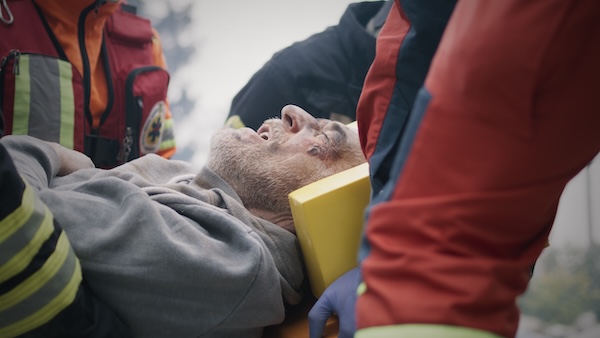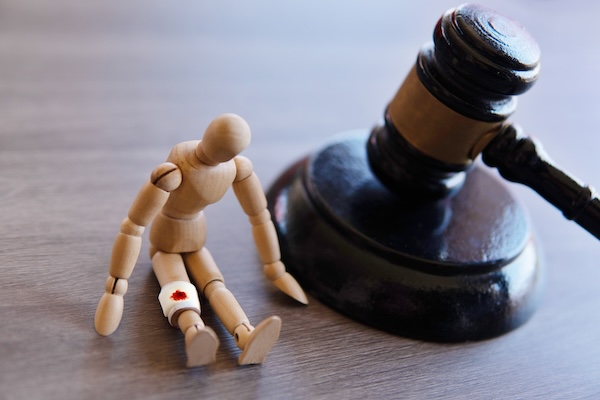Seeking Justice After a Life-Altering Injury in Illinois
When an individual sustains a severe, life-altering injury due to another’s negligence, the legal system offers recourse through personal injury law. In Illinois, understanding what constitutes a catastrophic injury is vital for securing proper compensation and long-term care. If you or a loved one has suffered such trauma, consulting an experienced Illinois personal injury lawyer is a critical first step.
Under Illinois law, a catastrophic injury is defined by its profound and permanent impact on the victim’s life. These injuries often lead to a lifetime of medical treatment, rehabilitation, and the inability to return to work. The Illinois General Assembly, through the Illinois Compiled Statutes, has provisions and regulations that address the needs and rights of individuals suffering from these injuries.
Understanding Catastrophic Injuries
A catastrophic injury is not merely severe; it is a life-changing medical condition. These injuries are often the direct result of traumatic events such as motor vehicle accidents, workplace accidents, sports injuries, or violent crimes. What sets catastrophic injuries apart is their long-term and often permanent nature. They usually require lifelong treatment, extensive rehabilitation, and dramatically affect a person’s quality of life.
Examples include:
- Spinal cord injuries leading to paraplegia or quadriplegia, which may require ventilator support and complete lifestyle adjustments
- Skull fractures and brain trauma that may result in seizures, memory loss, and personality changes
- Head injuries with cognitive impairments such as loss of motor function, speech difficulties, or vision loss
- Severe fractures requiring multiple surgeries and resulting in chronic pain or limited mobility
These injuries often demand specialized care and may result in full-time caregiver needs, mobility devices, and emotional and financial strain on the family.
Legal Definition and Statutory Authority
The Illinois Compiled Statutes do not define “catastrophic injury” in a single section, but various laws and amendments provide relevant guidance. These include provisions under workers’ compensation laws, personal injury statutes, and tort reform legislation. For instance, under the Illinois Workers’ Compensation Act, certain injuries are classified as catastrophic due to their impact on a worker’s ability to earn a living.
The Illinois General Assembly continues to monitor and revise applicable statutes through legislative action. These amending efforts often follow national trends and the introduction of new medical research from the National Center for Catastrophic Sport Injury Research and the National Federation of State High School Associations. These bodies influence legal interpretations and the standard of care for treatment and recovery programs.
Catastrophic Sports Injuries in Illinois
One of the most visible and researched forms of catastrophic injury occurs in sports, particularly in high-impact sports like football and diving. These injuries have led to tragic outcomes, including fatalities, permanent paralysis, and long-term cognitive dysfunction.
The National Federation has led efforts to identify and reduce catastrophic injuries among athletes, especially students in college and high school. The organization works with local school districts and the Illinois High School Association to implement safety protocols and enforce equipment and training regulations.
In Illinois, initiatives include training coaches and staff to recognize concussion symptoms, restricting contact drills, and mandating baseline cognitive testing. Inspired by catastrophic sport injury research, school programs emphasize the importance of prevention, quick-response protocols, and strict adherence to regulations.
The Role of Research and National Authorities
Dr. Robert Cantu, a leading voice in catastrophic sport injury research, has influenced national policy and Illinois law. His advocacy has led to rule changes in youth and professional sports and spurred legislative action aimed at prevention.
The National Center regularly publishes data-driven reports on sports-related injuries, helping lawmakers and educators understand trends and outcomes. Their findings are used to create educational materials, amend school programs, and support families of injured athletes.
Illinois has implemented amending legislation to enhance regulations for sports safety. The Secretary of State and other enforcement authorities have partnered with nonprofit organizations to raise awareness about catastrophic events, appropriate emergency response, and legal rights. Campaigns focus on informing parents, coaches, and students about the signs of traumatic brain injury and best practices for recovery and long-term treatment.
Common Causes of Catastrophic Injuries
Catastrophic injuries can occur in various contexts. While sports are a prominent area—particularly contact sports like football, wrestling, and diving—there are numerous other high-risk scenarios where life-altering injuries frequently occur. These scenarios often involve dynamic, uncontrolled environments where a single failure in safety oversight or product reliability can have devastating consequences.
Other common causes include car and motorcycle crashes, particularly when occupants are struck at high speeds, ejected from vehicles, or involved in collisions with large commercial trucks. Such accidents frequently result in spinal cord injuries, traumatic brain injuries, and multiple fractures.
Falls from heights in workplaces, especially on construction sites or in industrial settings, where a lack of proper harnesses, railings, or fall-protection systems can cause severe head trauma or skull fractures also contribute to catastrophic injury.
Another cause of catastrophic injury is industrial or construction accidents involving heavy machinery, electrical systems, or toxic exposure. These incidents often cause crushing injuries, amputations, or permanent respiratory or neurological illness.
Unfortunately, acts of violence, such as shootings, stabbings, or domestic assaults, which can inflict penetrating brain trauma or sever the spinal cord, sometimes leading to fatalities. are causes of catastrophic injury.
Lastly, dangerous or defective drugs or medical devices, such as malfunctioning implants or contaminated medications, that result in irreversible organ damage, chronic illness, or death. may also contribute to catastrophic injury.
In many of these cases, the underlying factor is negligence—whether it stems from a careless driver, an employer’s failure to enforce safety regulations, a negligent product manufacturer, or institutional oversight. These incidents not only lead to immediate trauma but also set the stage for long-term suffering and rehabilitation.
Victims often face a prolonged recovery that may include multiple surgeries, months or years of physical therapy, pain management, psychological counseling, and a complete redefinition of daily life and independence. The emotional and financial toll on both the injured and their families can be staggering, emphasizing the importance of comprehensive legal and medical support.
Medical and Legal Challenges of Catastrophic Injuries
The treatment and rehabilitation of catastrophic injuries require a multidisciplinary approach. Patients often need:
- Long-term physical and occupational therapy
- Advanced medical management and the coordination of specialists
- Psychological support for emotional and mental health
- Home modifications, such as ramps or specialized bathing equipment
- Assistive technologies including voice recognition software or powered wheelchairs
From a legal standpoint, establishing liability in catastrophic injury cases requires meticulous documentation, expert testimony, and a thorough understanding of medical records. Legal professionals must also evaluate the projected lifelong costs of care, lost wages, and the relationship between the injury and the person’s ability to enjoy life.
Statutory and Regulatory Framework in Illinois
The Illinois Compiled Statutes and actions by the Illinois General Assembly provide legal pathways for compensation and outline critical protections for individuals who have sustained catastrophic injuries.
These statutes are essential for helping victims and their families understand their rights and pursue appropriate remedies through civil and administrative channels.
Important sections of the law include:
- Workers’ Compensation Act (820 ILCS 305): This Act provides benefits to employees who suffer serious injuries, including spinal cord injuries and traumatic brain injuries, while performing their job duties. It ensures access to medical care, temporary or permanent disability benefits, and vocational rehabilitation.
- Illinois Wrongful Death Act: This statute permits close relatives of a deceased victim to file a lawsuit against the person or entity whose negligent or intentional act caused the death. Damages may include funeral expenses, loss of consortium, and compensation for lost companionship and future financial support.
- Illinois Survival Act: This law allows the estate of a deceased individual to recover damages the person could have claimed had they survived. It includes compensation for pain and suffering, lost income, and medical expenses incurred before death.
Together, these provisions define comprehensive legal recourse for victims of catastrophic events—especially when such injuries are the direct result of employer negligence, defective products, or unsafe premises.
These statutes define rights for the injured and their family, allowing for claims that cover:
- Current and future medical expenses, including surgeries, medication, assistive equipment, and in-home nursing care
- Lost wages and diminished earning capacity due to the permanent nature of many catastrophic injuries
- Pain, suffering, and emotional distress, which often includes depression, PTSD, or anxiety disorders
- Long-term rehabilitation and care costs, such as physical and occupational therapy, cognitive training, and psychological support
- Home or vehicle modifications to accommodate mobility challenges or loss of motor function
In addition to outlining rights and benefits, these laws also place obligations on employers, product manufacturers, and institutions to uphold standards of care. Failure to meet these legal duties may lead to liability and the imposition of significant financial penalties. The evolving nature of these statutes—frequently amended in response to new data and public health concerns—reflects Illinois’ ongoing commitment to improving safety, reducing injury risks, and promoting fair outcomes for the injured and their families.
- Current and future medical expenses
- Lost wages and diminished earning capacity
- Pain, suffering, and emotional distress
- Long-term rehabilitation and care costs
The Importance of Advocacy and Legal Support
Navigating the aftermath of a catastrophic injury is a complex matter. Victims and families often require more than medical treatment—they need legal support, insurance negotiations, and possibly litigation. An experienced Illinois personal injury lawyer can:
- Help identify liable parties and contributing factors
- Ensure adherence to all legal provisions and relevant statutes
- Secure fair compensation through negotiation or trial
- Advocate for long-term care and financial security, including structured settlements or trusts
Such legal representation is crucial for ensuring that injured parties receive not only justice but also the support necessary for a meaningful life post-injury.
Prevention and Public Policy Initiatives
A growing emphasis on injury prevention has led to reduction strategies across Illinois. State districts, nonprofit organizations, and the university system have collaborated on educational campaigns and safety programs. These initiatives include:
- Mandatory concussion protocols and return-to-play guidelines
- Enhanced training for coaches and athletic staff
- Better helmet and padding equipment technology
- Improved sports officiating standards and game rule reforms
- Public access defibrillator (AED) initiatives in schools and gyms
The relationship between college, high school, and community sports and catastrophic injury is now a well-documented area of concern. These programs have not only increased awareness but also contributed to measurable declines in certain types of sports-related injuries.
Take Action with Illinois Lawyers 365: Your Advocate After Catastrophic Injury
If you or a loved one has suffered a life-altering injury, waiting to act only prolongs your physical, emotional, and financial recovery. At Illinois Lawyers 365, our expert team understands the devastating effects of catastrophic injury and the complexities of Illinois law. We are here to stand by your side—from immediate legal guidance to securing long-term financial stability and proper medical support.
Time is critical. Critical deadlines in the statutes, timely treatment, and the collection of crucial medical evidence can all influence the outcome of your case. Let Illinois Lawyers 365 be your trusted partner in transforming tragedy into lasting support and legal justice. Contact us now 800-800-8000—your future shouldn’t wait.








